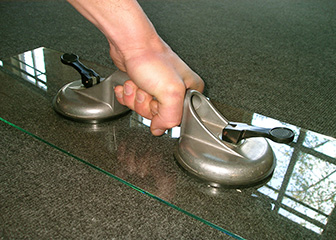Summary

| Quick Facts: Glaziers | |
|---|---|
|
$36,640 per year
$17.61 per hour |
|
| High school diploma or equivalent | |
| None | |
| Apprenticeship | |
| 41,900 | |
| 42% (Much faster than average) | |
| 17,700 | |
What Glaziers Do
Glaziers install glass in windows, skylights, storefronts, and display cases to create distinctive designs or reduce the need for artificial lighting.
Work Environment
As in many other construction trades, the work is physically demanding. Glaziers risk cuts from tools and glass, and falls from ladders and scaffolding. Most work full time. About 5 percent were self-employed in 2010.
How to Become a Glazier
Glaziers typically enter the occupation with a high school diploma or equivalent, and learn their trade through a formal apprenticeship.
Pay
The median annual wage of glaziers was $36,640 in May 2010.
Job Outlook
Employment of glaziers is projected to grow 42 percent from 2010 to 2020, much faster than the average for all occupations. Employment growth is expected as commercial construction increasingly uses glass exteriors. Glaziers who have a wide range of skills should have the best job opportunities.
Similar Occupations
Compare the job duties, education, job growth, and pay of glaziers with similar occupations.
O*NET
O*NET provides comprehensive information on key characteristics of workers and occupations.
Contacts for More Information
Learn more about glaziers by contacting these additional resources.









